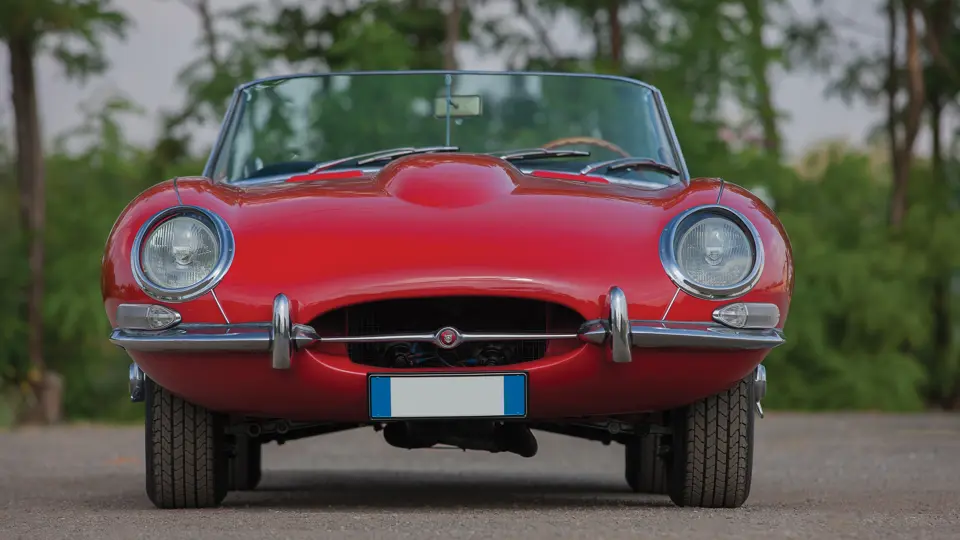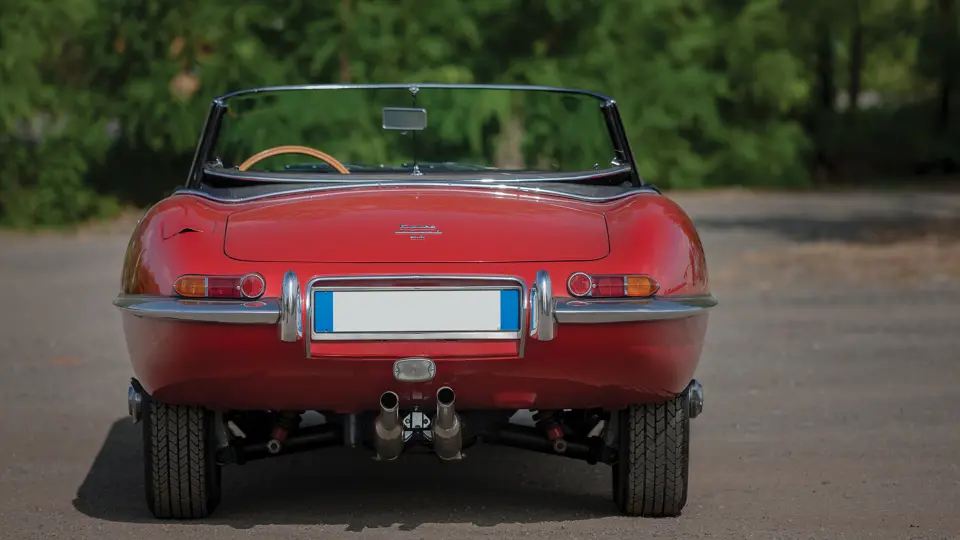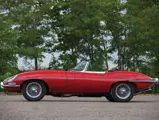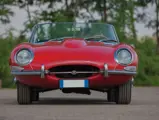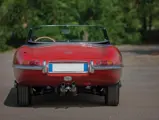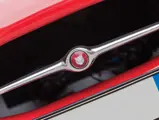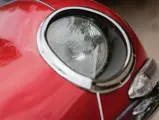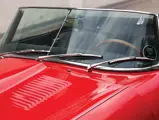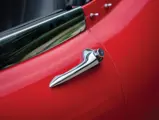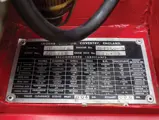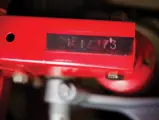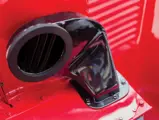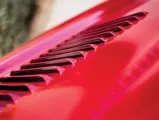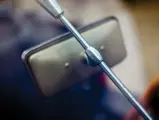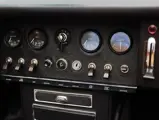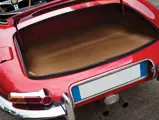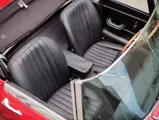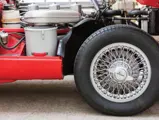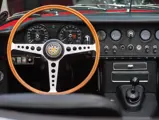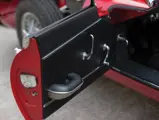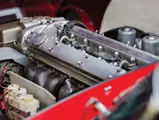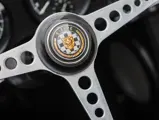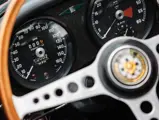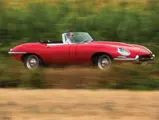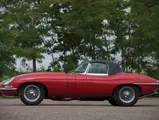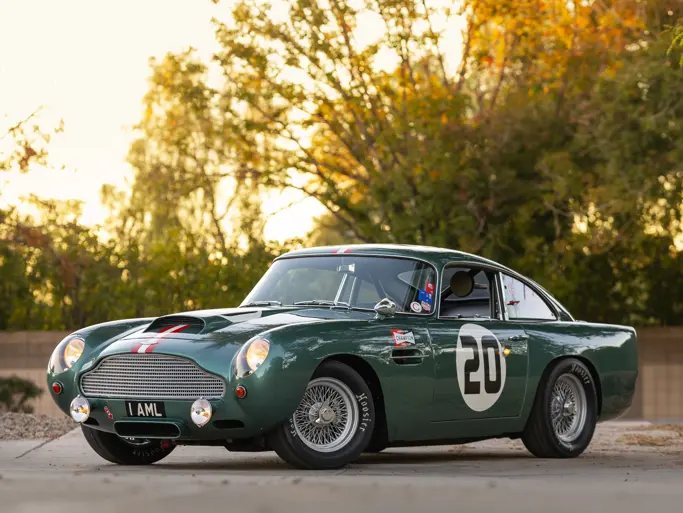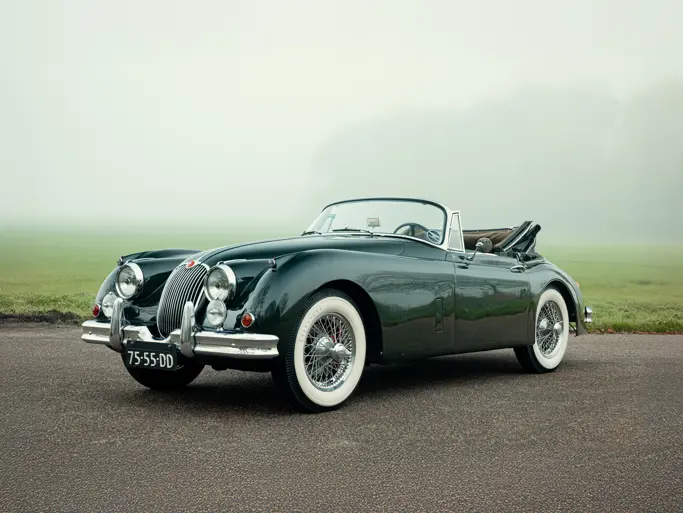265 bhp, 4,235 cc DOHC inline six-cylinder engine with triple SU carburettors, four-speed fully synchronised manual transmission, independent front suspension with transverse wishbones, torsion bars, telescopic shocks, and an anti-roll bar, independent rear suspension with lower transverse tubular links and twin coil springs, and four-wheel Dunlop twin-circuit hydraulic disc brakes. Wheelbase: 2,440 mm
Jaguar had enjoyed great success with its XK series of sports cars, but the E-Type was not, as might have been expected, a continuation of the XK150. Instead, the XKE (as it was dubbed in the US) was based largely upon a pair of prototype racing cars, E1A and E2A, which themselves borrowed heavily from the highly successful monocoque-bodied D-Type racing chassis. In fact, E2A was the intended replacement for the D. Following earlier precedent, there would be two versions of the new E-Type, an open two-seater, or roadster, and a fixed head coupé, both with sleek and curvaceous bodies designed by Malcolm Sayer, who was a pioneer in automotive aerodynamics.
Under the E-Type’s broad front-hinged bonnet was essentially the same 3.8-litre, twin-cam inline six as in its predecessors, which could produce 265 brake horsepower. The gearbox was a four-speed manual without synchronisation on the first gear (known as the “Moss” box). Although, suspension was thoroughly modern: independent all around. There were powerful four-wheel disc brakes, inboard at the rear to reduce un-sprung weight. Performance was astonishing, especially for its price, as the E-Type had real 150-mph capability. The first examples did have some minor “flaws”, many of which were rectified in 1964 with a larger and more robust engine of 4.2 litres. Although it still offered the same 265 brake horsepower, it came with greatly increased mid-range torque: 283 foot-pounds versus the 3.8’s 240 foot-pounds. More importantly, though, was the introduction of a new fully synchronised transmission with a new Laycock diaphragm clutch. The brakes were improved, with better power-assist, and the seatbacks were now adjustable.
The Jaguar offered here is a magnificent example of one of the most sought-after versions of the E-Type: the Series 1 4.2-Litre from 1965. According to documentation available on file, it was exported from the US to Italy in the late 1980s. It later joined a large collection of ’50s and ’60s sports cars and was then subject to an extensive restoration in Italy starting in 1992. The car was completely finished more recently and has seen very little use since. It is currently presented in the iconic colours of Carmen Red over a black leather interior, as restored in Italy, and of course, it sports beautiful Dunlop chrome wire wheels. Notably, the seats are not of standard design, as the seat squabs are of custom construction to provide additional driving comfort. This E-Type offers the highly desirable above-mentioned mechanical improvements but still retains the original design’s most appealing stylistic features, such as covered headlights, a small bonnet air-intake, turn signal lights and taillights above the delicate horizontal blade bumpers, and exhaust tips that protrude under the number plate in the rear.
The E-Type is a British sports car icon, and this beautiful example is ready to show off its sensuous curves to a new owner.




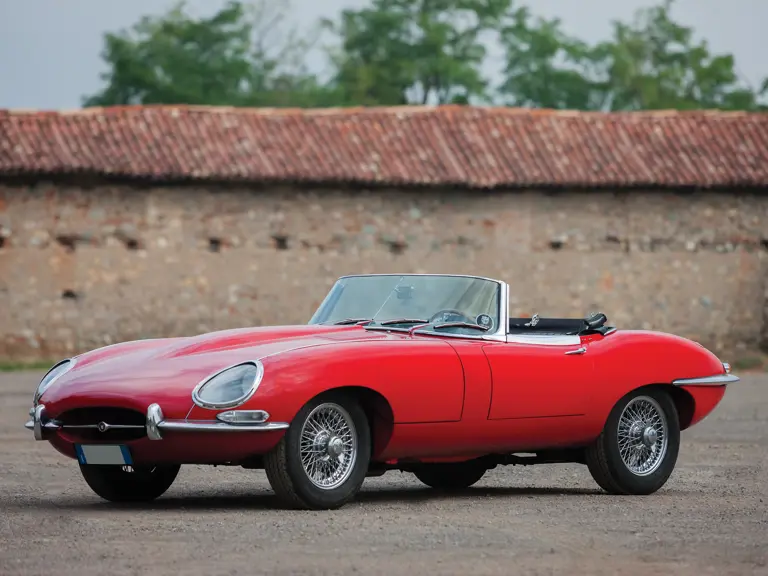
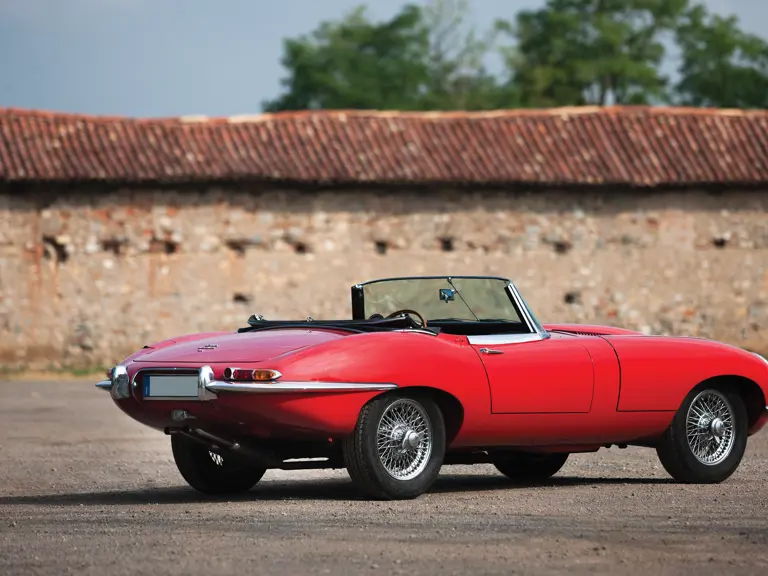
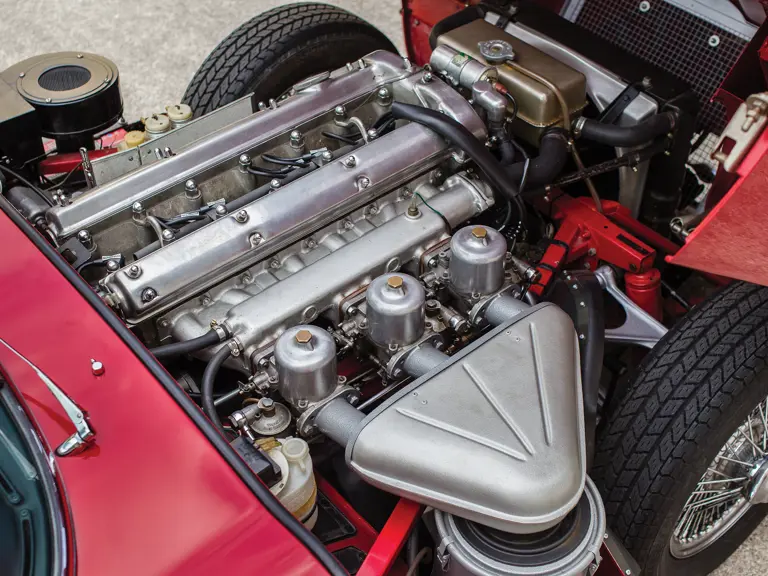


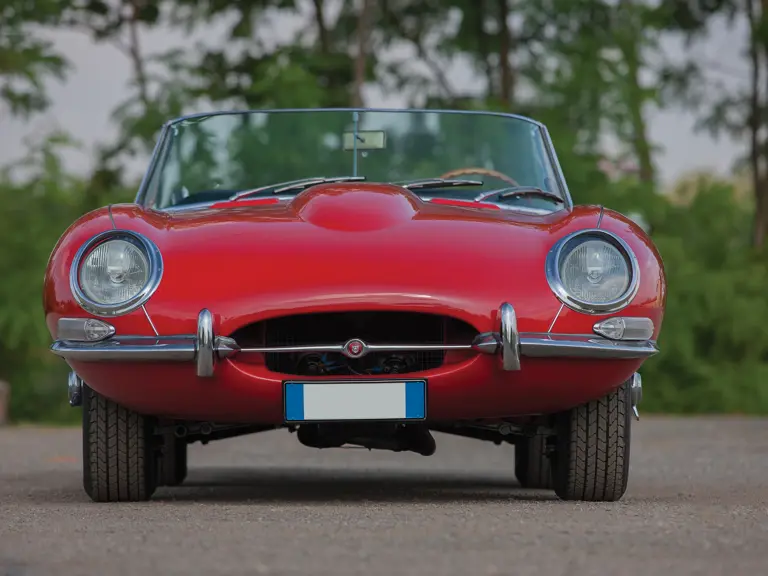
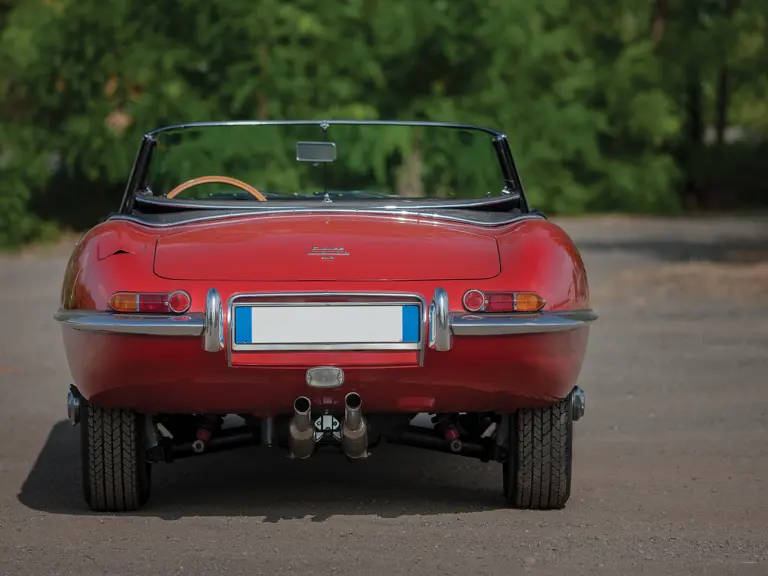
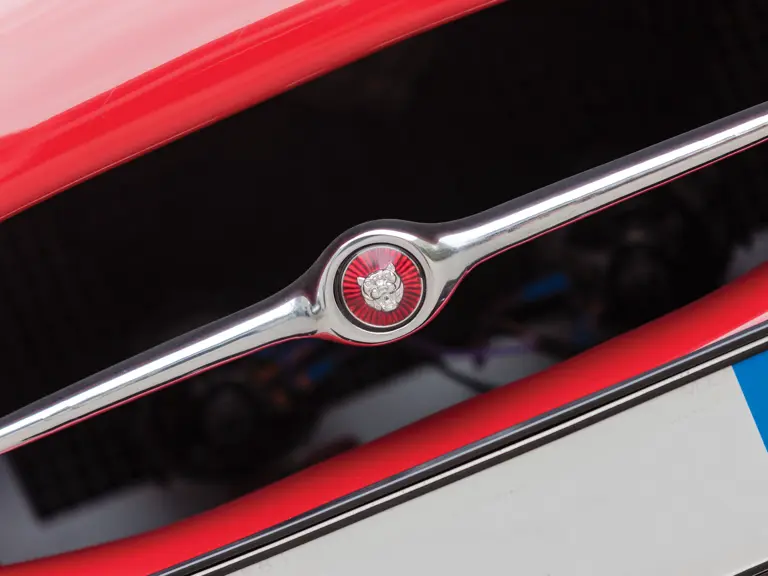
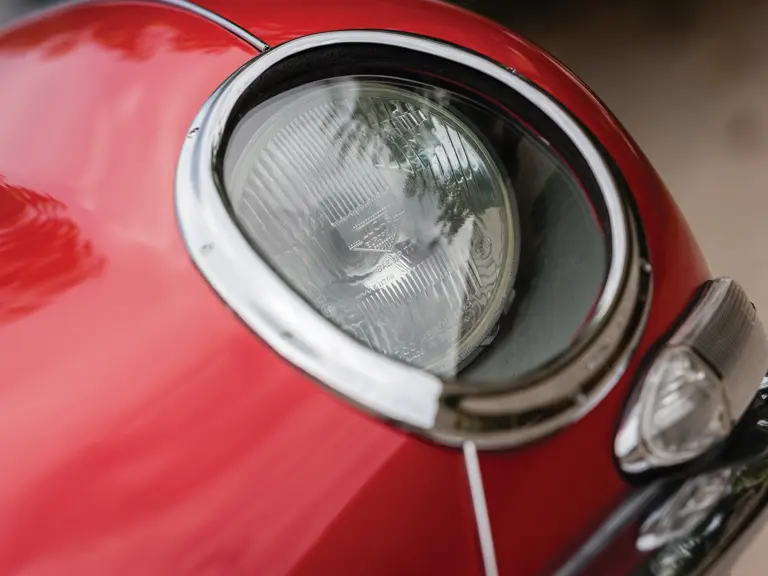
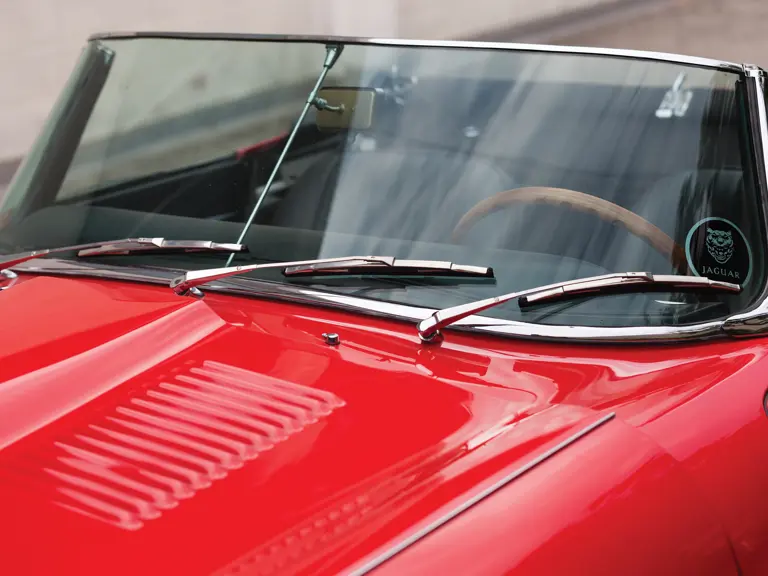
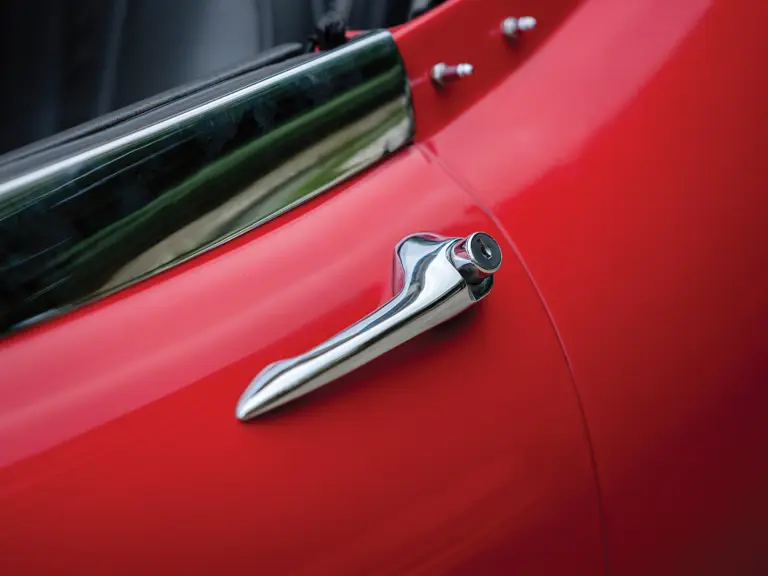
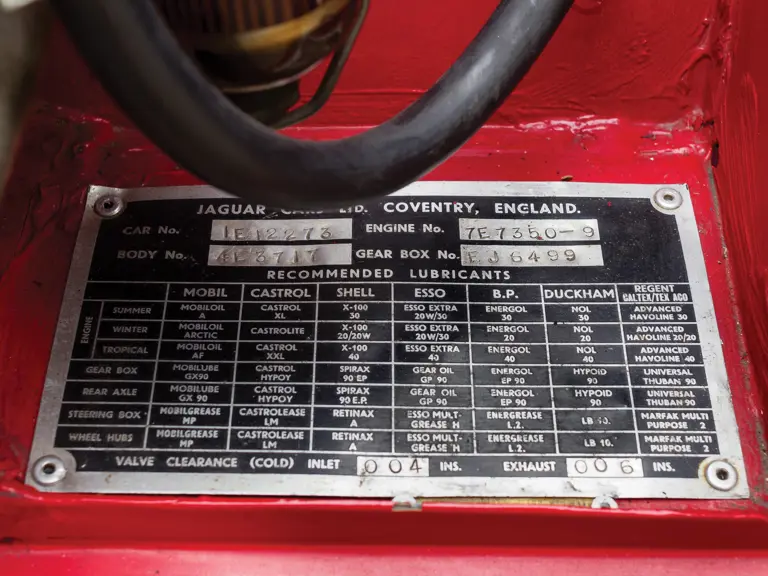


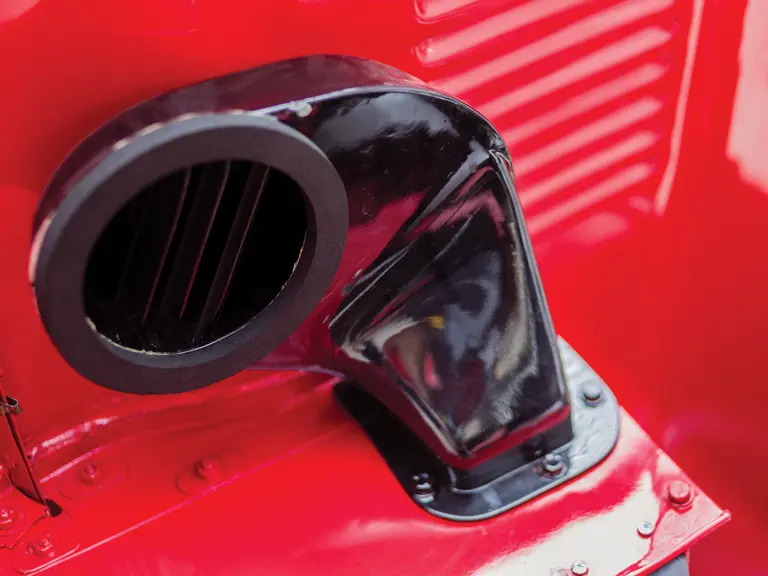
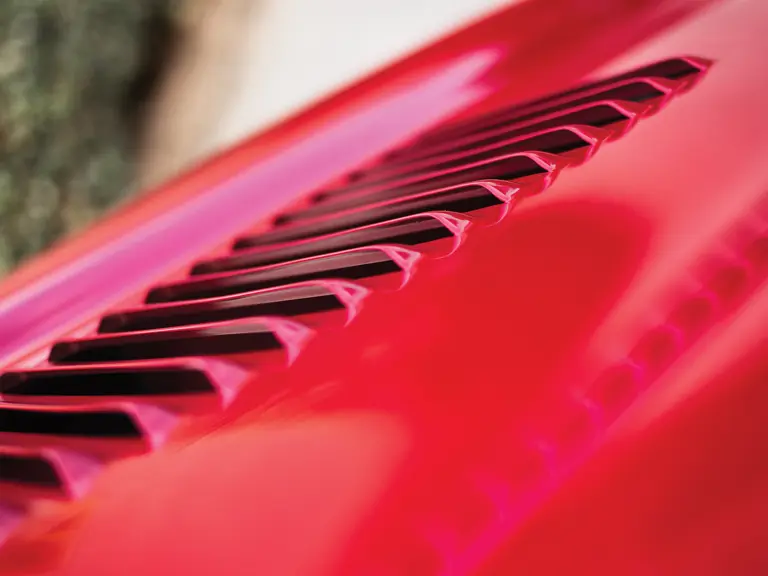

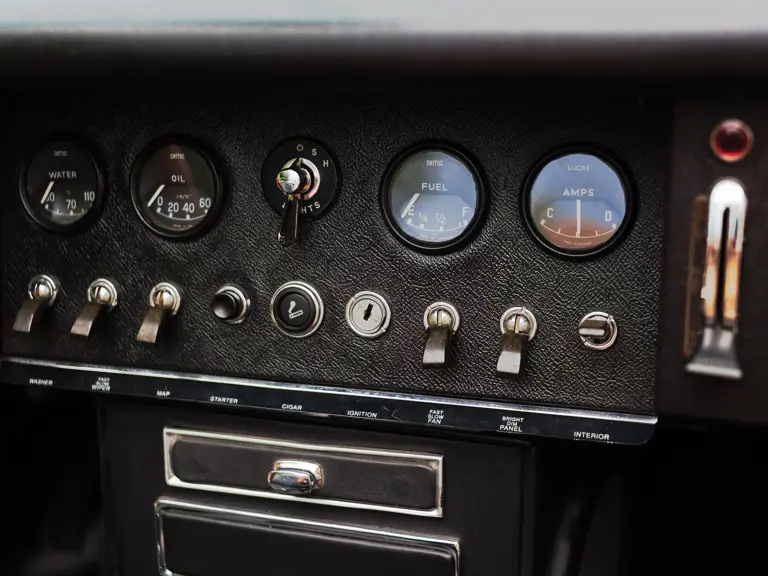
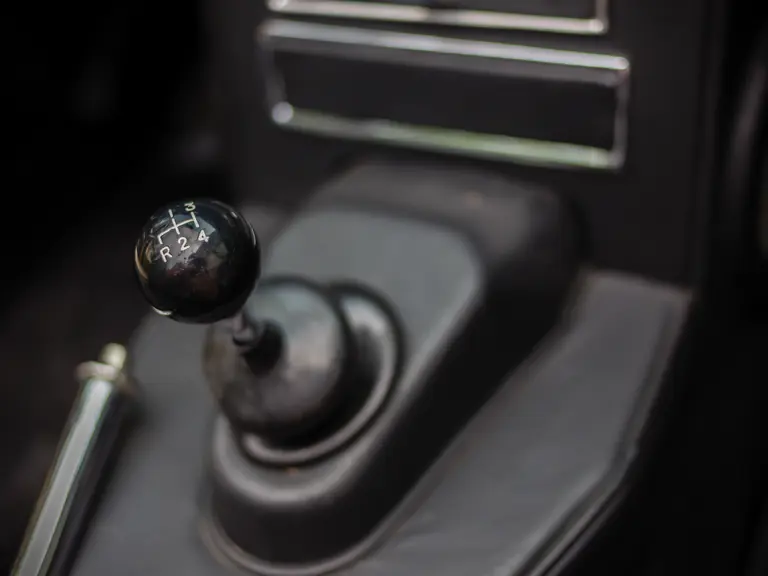
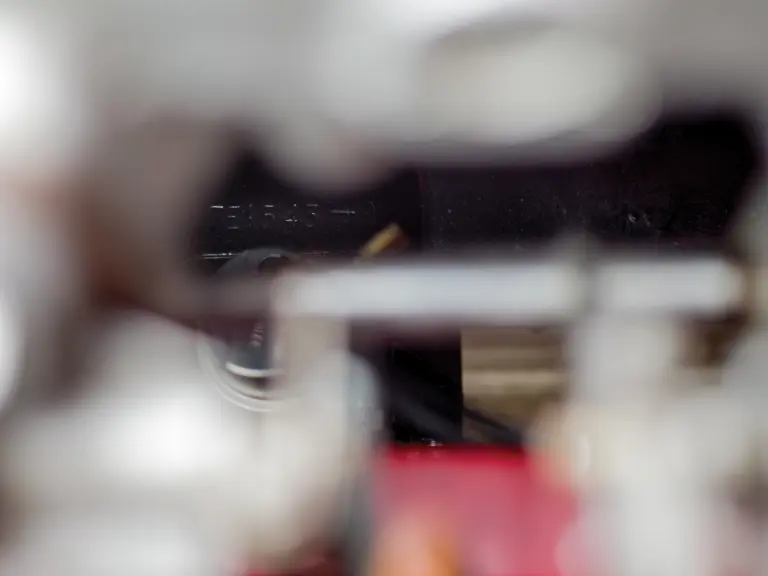

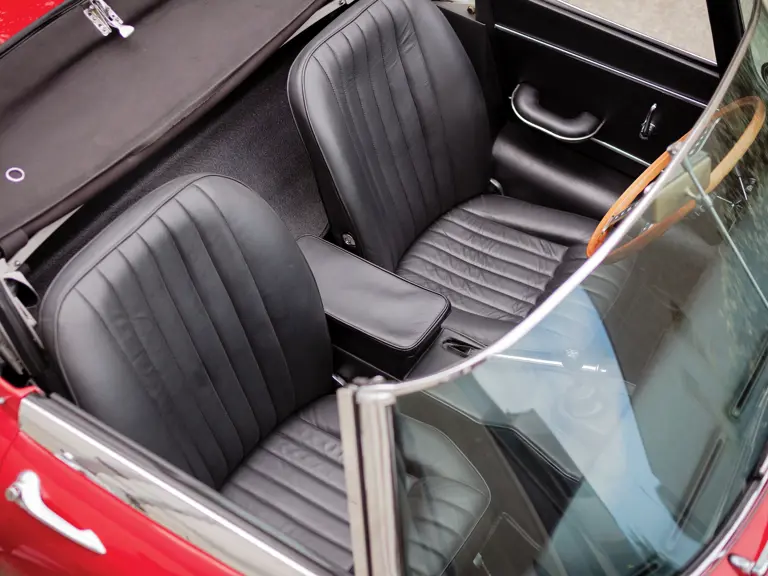
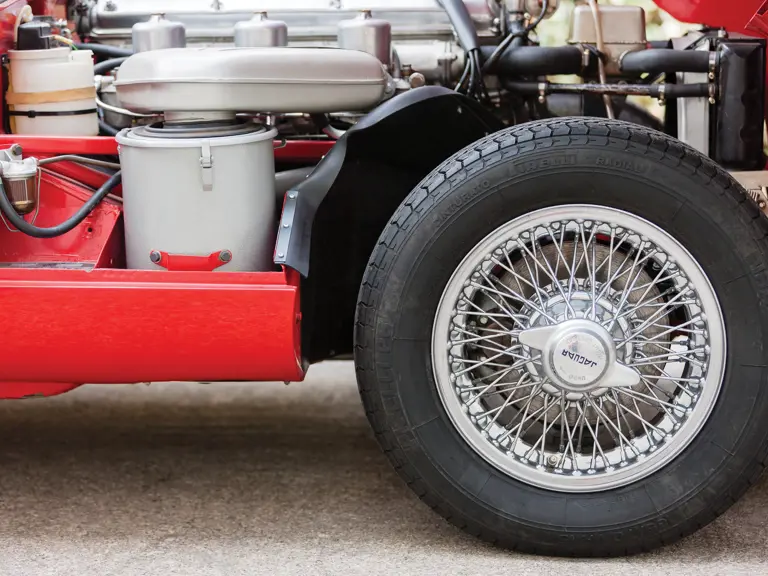
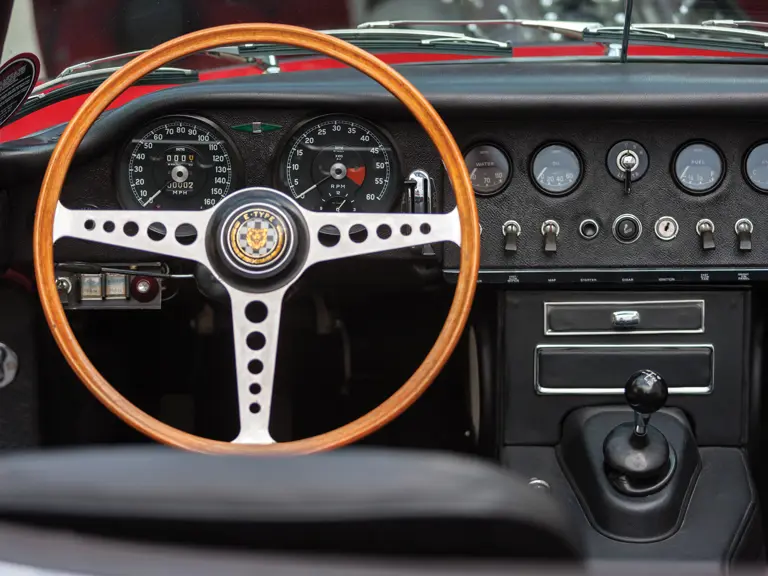
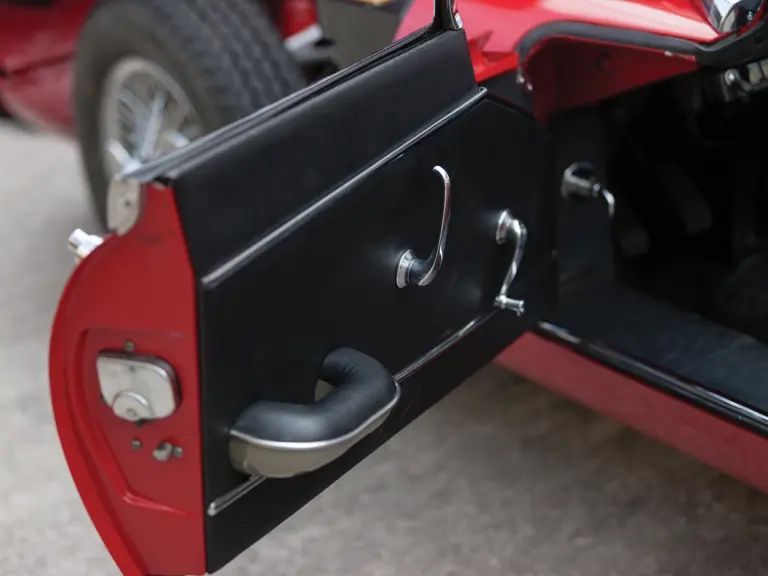
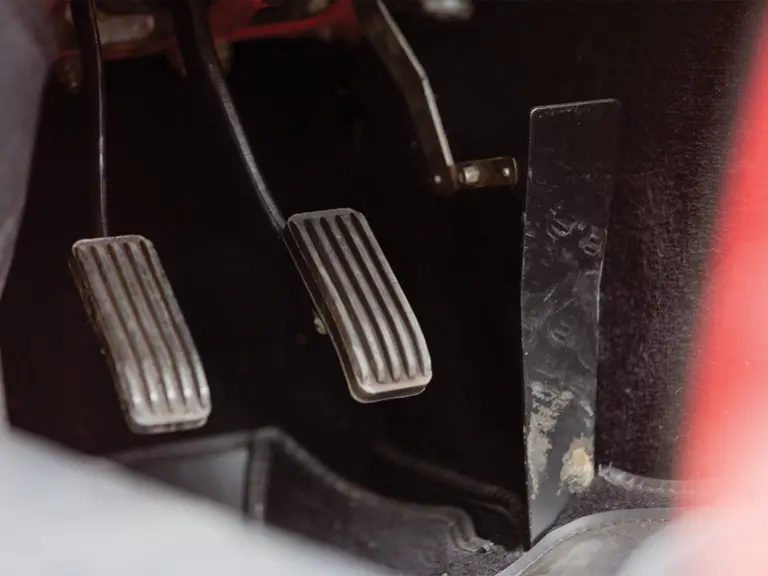
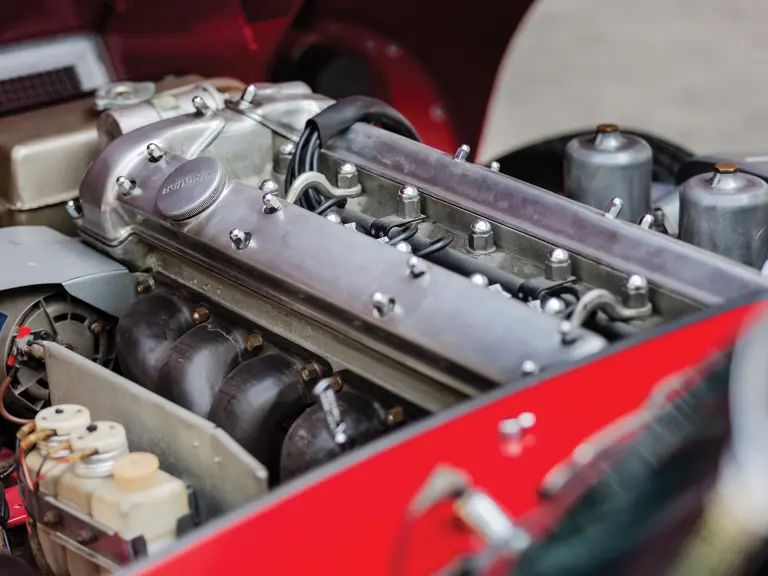

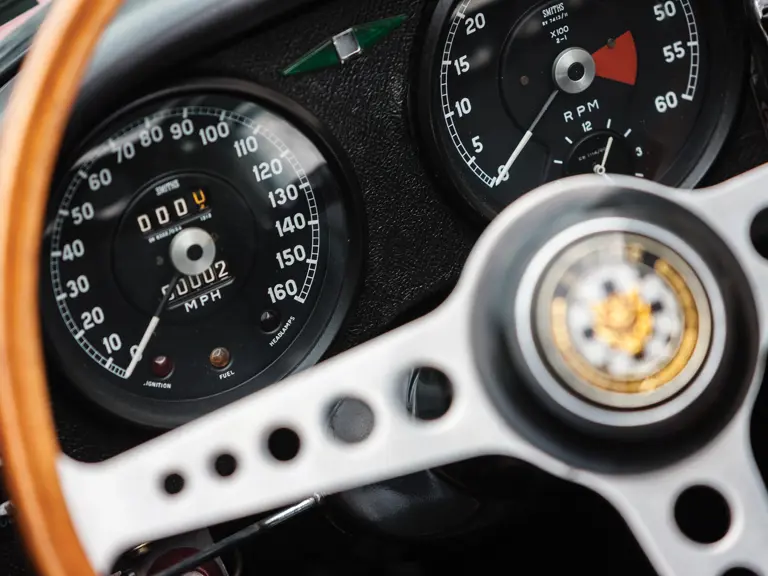
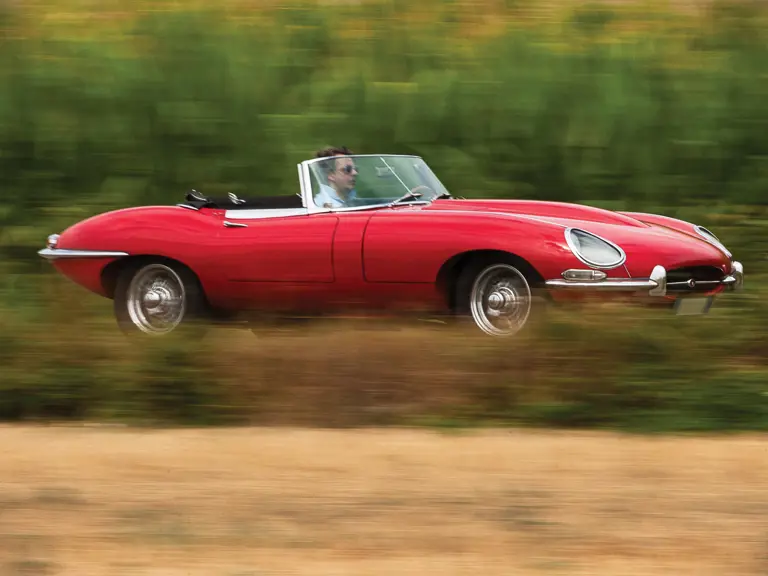
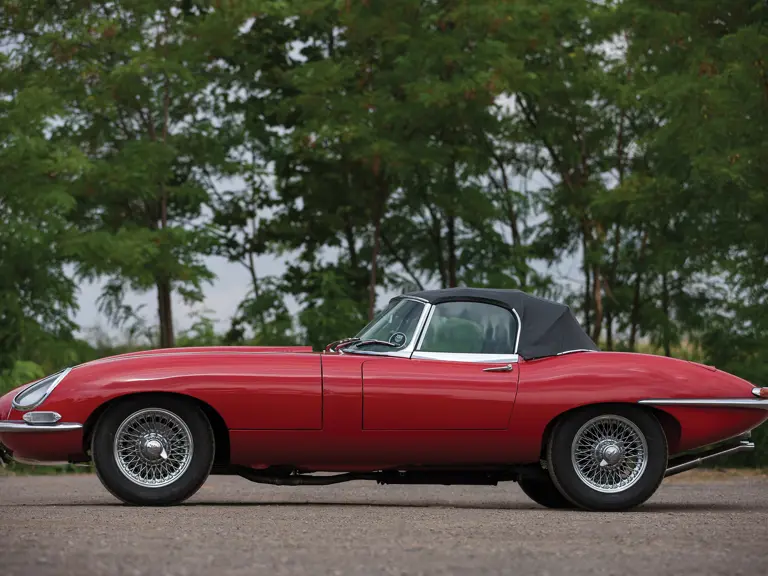

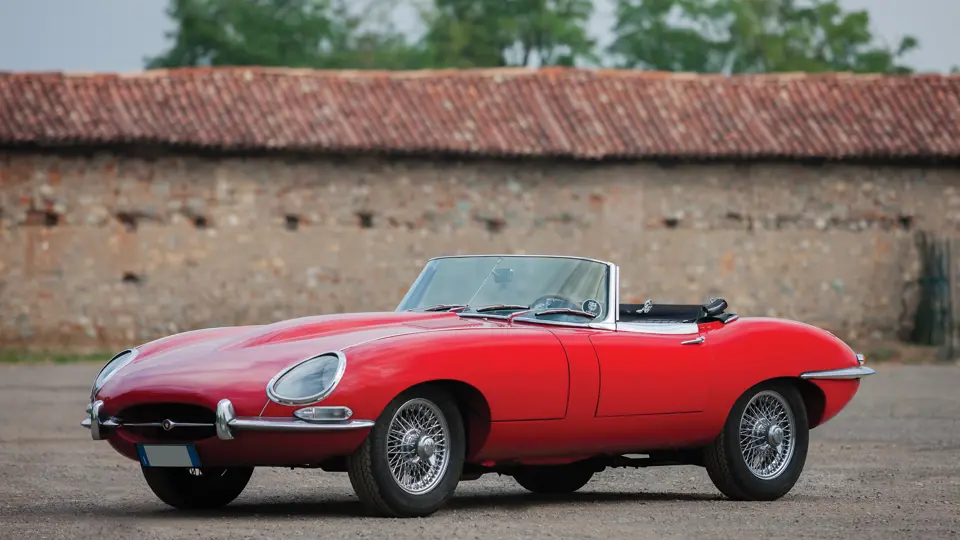
 | London, United Kingdom
| London, United Kingdom

